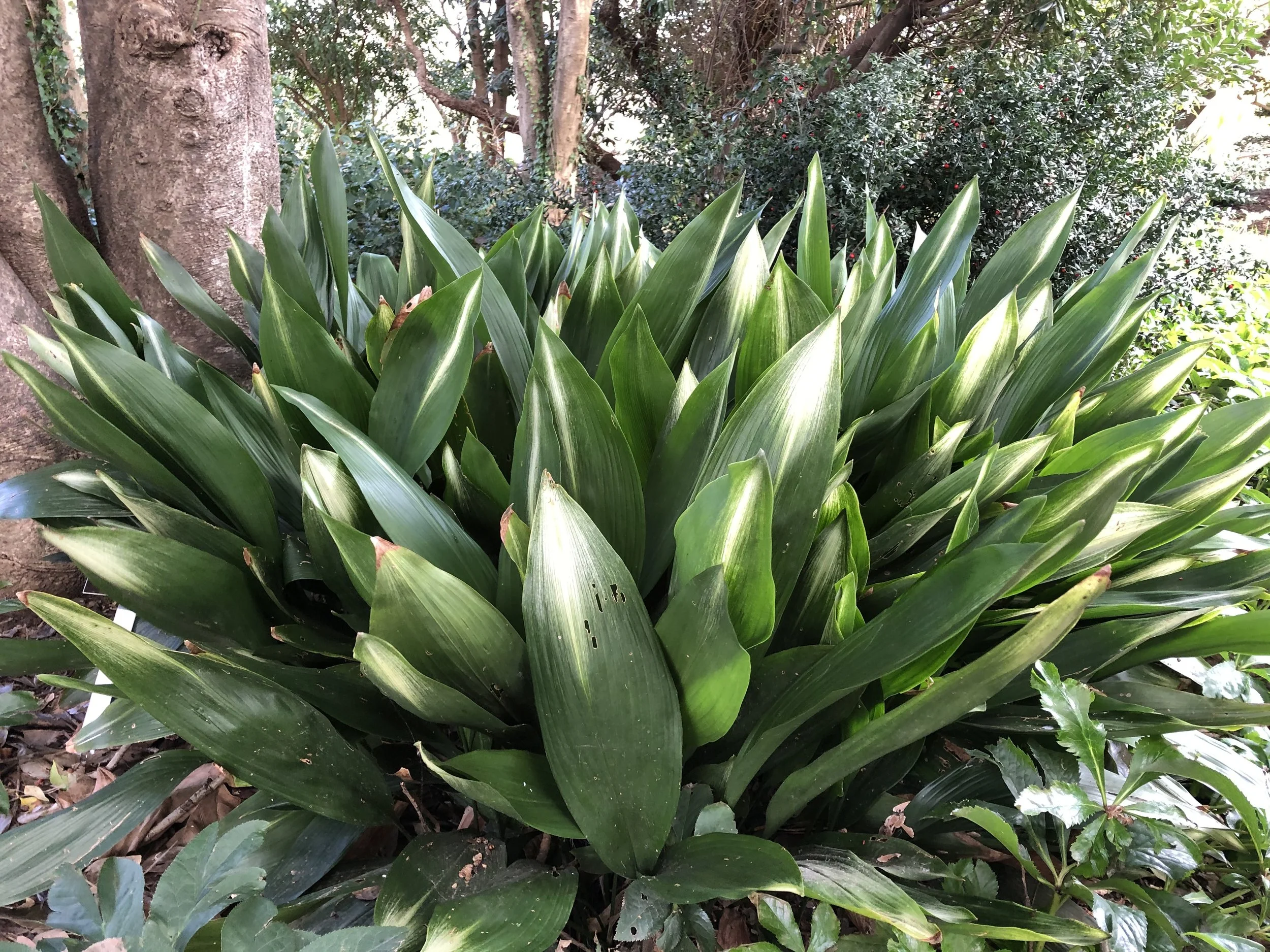In need of a showy, evergreen plant that will thrive in dry shade and not get eaten by animals? Look no further than the cast iron plant! Aspidistra is a genus of flowering plants now assigned to the Asparagaceae family. They are native to eastern and southeastern Asia, particularly China and Vietnam.
This genus was named by the English botanist John Ker Gawler in 1822. It is a blend of the Greek “aspid” and the genus name Tupistra. It was originally placed in a broadly defined Liliaceae family, before being placed in the families Convallariaceae and Ruscaceae. It wasn’t until 2009 that it finally was assigned to its currently plant family! Sorry, I can’t resist a little nerdy nomenclature information.
Cast Iron plant didn’t get much attention until recent decades when botanical authorities in Asia began to uncover the vast array of species, now identified to be around 100! Aspidistra elatior is the most common species and can be grown as a landscape plant in zones 7-9. It is a popular houseplant that tolerates low light and neglect, especially for people living in colder climates.
I was first introduced to this plant during my internship at Montrose Gardens where they were planted in mass under large oak trees with no supplemental water. They were one of the few plants in the garden that I didn’t have to spray with deer repellent! A few years later, when I was production manager at Plant Delights Nursery, I was introduced to the diversity of this genus, which includes variegated selections, narrow leaf forms, and even dwarf varieties! It is impossible to pick a favorite, but ‘Asahi’, ‘Okame’, and ‘Snow Cap’ are a few that I can’t get enough of for low maintenance, year-round interest.
Generally, cast iron plants are considered for their foliage, which is durable and can be used in long lasting cut flower arrangement. But did you know they flower? Aspidistra tonkinensis 'Hanoi Honey' is a new introduction that offers an incredible flower display starting in late fall. The white flowers with a deep burgundy throat appear at the base of the plant, so be prepared to get on your knees to enjoy the show! Or grow it in a container to enjoy as a tabletop centerpiece that is sure to capture the attention of visitors.
Plant is part to full shade to ensure the foliage doesn’t get sunburned. And though Cast Iron plants will tolerate poor soil, they do appreciate moist, well-drained conditions for optimal growth. Though every species and variety will have a different mature size, count on these growing about 2’ wide and 2’ tall. From my experience, they do not need fertilizer. In fact, many of the variegated forms will turn all green when given too much nitrogen. Grow these lean and you will be impressed by how capable they are as a hands-off landscape specimen.






